|
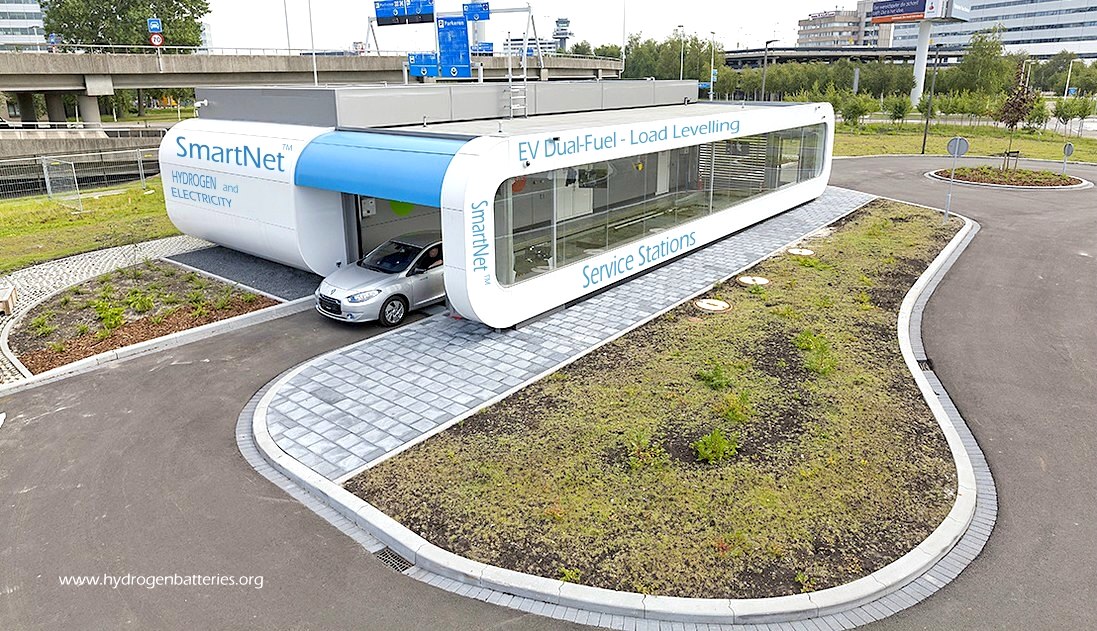
DUAL
FUEL - SmartNet™ service stations refuel hydrogen and battery
electric vehicles. Better Place only managed battery EVs, but proved
that such a system is workable. Smart service stations also dispense
gas and electricity for rapid charging, and have load-leveling
ability, to smooth the flow of renewably generated energy. A boon for TSOs
and DSOs. You
saw it first from the Cleaner
Ocean Foundation Ltd in 2020.
Imitations are sure to follow as the planet heats up!
THE
AUTOMATED and ELECTRIC
VEHICLES ACT 2018
Introductory
Text
PART 1 Automated vehicles: liability of
insurers etc
1.Listing
of automated vehicles by the Secretary of State
2.Liability
of insurers etc where accident caused by automated vehicle
3.Contributory
negligence etc
4.Accident
resulting from unauthorised software alterations or failure to update
software
5.Right
of insurer etc to claim against person responsible for accident
6.Application
of enactments
7.Report
by Secretary of State on operation of this Part
8.Interpretation
PART 2 Electric vehicles: charging
Introductory - 9.Definitions
Requirements and prohibitions
10.Public
charging or refuelling points: access, standards and connection
11.Large
fuel retailers etc: provision of public charging or refuelling points
12.Duty
to consider making regulations under section 11(1)(a) on request by
elected mayor
13.Information
for users of public charging or refuelling points
14.Transmission
of data relating to charge points
15.Smart
charge points
General and supplementary
16.Enforcement
17.Exceptions
18.Regulations
19.Report
by Secretary of State on operation of this Part
PART 3 Miscellaneous and general
20.Minor
and consequential amendments
21.Commencement
22.Extent
23.Short
title
SCHEDULE
MINOR AND CONSEQUENTIAL AMENDMENTS
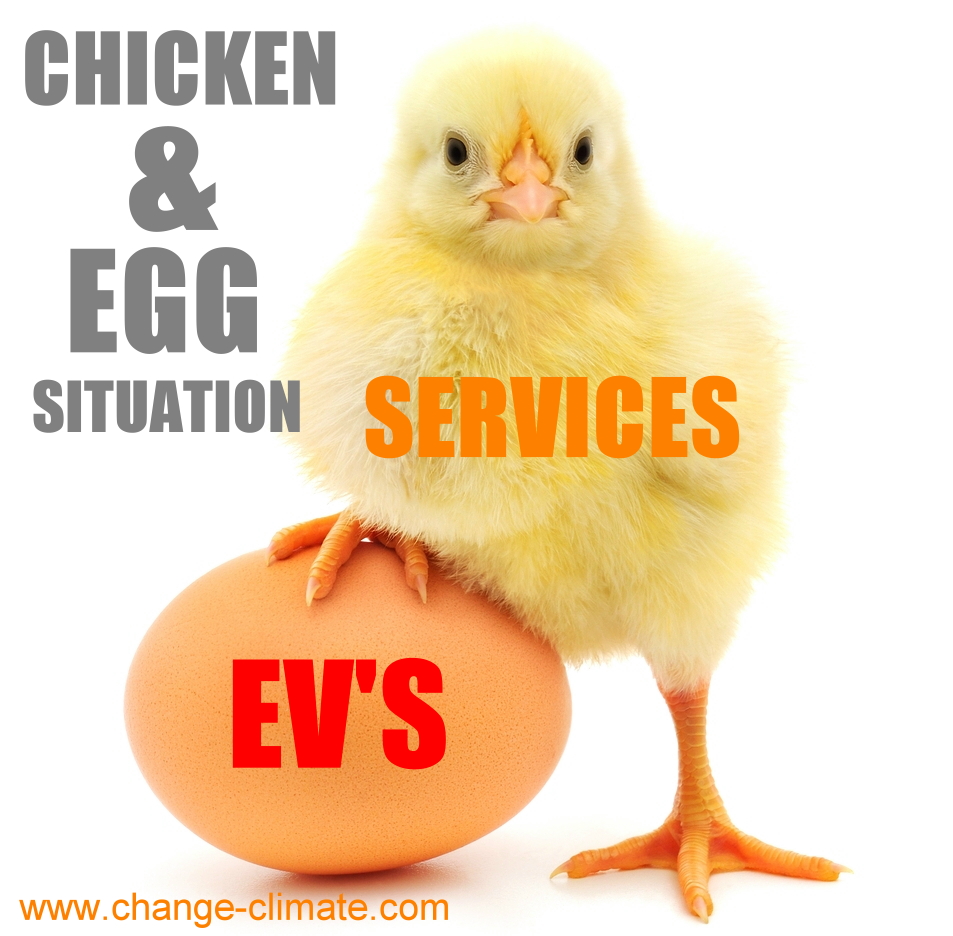
CRACKING
THE EGG
- Policy makers need to think further ahead in grant making, not just
the end of their noses. Ten years is not a long time. In ten years
time we will not have the solutions needed for E-Mobility, if we don't
start investing for the future now. We will quote this in 2031, and
see how much has been achieved. Looking back to 1991 when SmartNet™
was conceived is easy - not a lot! Politicians of the day with foggy
vision poo-pooed the concept, in Australia, California and the UK. We
say they might have considered encouraging innovation, instead of stifling
it.
THE
AUTOMATED and ELECTRIC VEHICLES ACT 2018
2018 CHAPTER 18 [19th July 2018]
An Act to make provision about automated vehicles and electric
vehicles.
Be it enacted by the Queen’s
most Excellent Majesty, by and with the advice and consent of the
Lords Spiritual and Temporal, and Commons, in this present Parliament
assembled, and by the authority of the same, as follows:—
Introductory Text
PART 1 Automated vehicles: liability of insurers etc
1
Listing of automated vehicles by the Secretary of State
(1) The Secretary of State must prepare, and keep up to date, a list
of all motor vehicles that—
(a) are in the Secretary of State’s opinion designed or adapted to
be capable, in at least some circumstances or situations, of safely
driving themselves, and
(b) may lawfully be used when driving themselves, in at least some
circumstances or situations, on roads or other public places in Great
Britain.
(2) The list may identify vehicles —
(a) by type,
(b) by reference to information recorded in a registration document
issued under regulations made under section 22 of the Vehicle Excise
and Registration Act 1994, or
(c) in some other way.
(3) The Secretary of State must publish the list when it is first
prepared and each time it is revised.
(4) In this Part “automated vehicle” means a vehicle listed under
this section.
2
Liability of insurers etc where accident caused by automated vehicle
(1) Where —
(a) an accident is caused by an automated vehicle when driving itself
on a road or other public place in Great Britain,
(b) the vehicle is insured at the time of the accident, and
(c) an insured person or any other person suffers damage as a result
of the accident, the insurer is liable for that damage.
(2) Where —
(a) an accident is caused by an automated vehicle when driving itself
on a road or other public place in Great Britain,
(b) the vehicle is not insured at the time of the accident,
(c) section 143 of the Road Traffic Act 1988 (users of motor vehicles
to be insured or secured against third-party risks) does not apply to
the vehicle at that time —
(i) because of section 144(2) of that Act (exemption for public bodies
etc), or
(ii) because the vehicle is in the public service of the Crown, and
(d) a person suffers damage as a result of the accident, the owner of
the vehicle is liable for that damage.
(3) In this Part “damage” means death or personal injury, and any
damage to property other than —
(a) the automated vehicle,
(b) goods carried for hire or reward in or on that vehicle or in or on
any trailer (whether or not coupled) drawn by it, or
(c) property in the custody, or under the control, of —
(i) the insured person (where subsection (1) applies), or
(ii) the person in charge of the automated vehicle at the time of the
accident (where subsection (2) applies).
(4) In respect of damage to property caused by, or arising out of, any
one accident involving an automated vehicle, the amount of the
liability under this section of the insurer or owner of the vehicle is
limited to the amount for the time being specified in section
145(4)(b) of the Road Traffic Act 1988 (limit on compulsory insurance
for property damage).
(5) This section has effect subject to section 3.
(6) Except as provided by section 4, liability under this section may
not be limited or excluded by a term of an insurance policy or in any
other way.
(7) The imposition by this section of liability on the insurer or
vehicle owner does not affect any other person’s liability in
respect of the accident.
3
Contributory negligence etc
(1) Where —
(a) an insurer or vehicle owner is liable under section 2 to a person
(“the injured party”) in respect of an accident, and
(b) the accident, or the damage resulting from it, was to any extent
caused by the injured party, the amount of the liability is subject to
whatever reduction under the Law Reform (Contributory Negligence) Act
1945 would apply to a claim in respect of the accident brought by the
injured party against a person other than the insurer or vehicle
owner.
(2) The insurer or owner of an automated vehicle is not liable under
section 2 to the person in charge of the vehicle where the accident
that it caused was wholly due to the person’s negligence in allowing
the vehicle to begin driving itself when it was not appropriate to do
so.
4
Accident resulting from unauthorised software alterations or failure
to update software
(1) An insurance policy in respect of an automated vehicle may exclude
or limit the insurer’s liability under section 2(1) for damage
suffered by an insured person arising from an accident occurring as a
direct result of —
(a) software alterations made by the insured person, or with the
insured person’s knowledge, that are prohibited under the policy, or
(b) a failure to install safety-critical software updates that the
insured person knows, or ought reasonably to know, are
safety-critical.
(2) But as regards liability for damage suffered by an insured person
who is not the holder of the policy, subsection (1)(a) applies only in
relation to software alterations which, at the time of the accident,
the person knows are prohibited under the policy.
(3) Subsection (4) applies where an amount is paid by an insurer under
section 2(1) in respect of damage suffered, as a result of an
accident, by someone who is not insured under the policy in question.
(4) If the accident occurred as a direct result of —
(a) software alterations made by an insured person, or with an insured
person’s knowledge, that were prohibited under the policy, or
(b) a failure to install safety-critical software updates that an
insured person knew, or ought reasonably to have known, were
safety-critical, the amount paid by the insurer is recoverable from
that person to the extent provided for by the policy.
(5) But as regards recovery from an insured person who is not the
holder of the policy, subsection (4)(a) applies only in relation to
software alterations which, at the time of the accident, the person
knew were prohibited under the policy.
(6) For the purposes of this section —
(a) “software alterations” and “software updates”, in relation
to an automated vehicle, mean (respectively) alterations and updates
to the vehicle’s software;
(b) software updates are “safety-critical” if it would be unsafe
to use the vehicle in question without the updates being installed.
5
Right of insurer etc to claim against person responsible for accident
(1) Where —
(a) section 2 imposes on an insurer, or the owner of a vehicle,
liability to a person who has suffered damage as a result of an
accident (“the injured party”), and
(b) the amount of the insurer’s or vehicle owner’s liability to
the injured party in respect of the accident (including any liability
not imposed by section 2) is settled, any other person liable to the
injured party in respect of the accident is under the same liability
to the insurer or vehicle owner.
(2) For the purposes of this section, the amount of the insurer’s or
vehicle owner’s liability is settled when it is established —
(a) by a judgment or decree,
(b) by an award in arbitral proceedings or by an arbitration, or
(c) by an enforceable agreement.
(3) If the amount recovered under this section by the insurer or
vehicle owner exceeds the amount which that person has agreed or been
ordered to pay to the injured party (ignoring so much of either amount
as represents interest), the insurer or vehicle owner is liable to the
injured party for the difference.
(4) Nothing in this section allows the insurer or vehicle owner and
the injured party, between them, to recover from any person more than
the amount of that person’s liability to the injured party.
(5) For the purposes of —
(a) section 10A of the Limitation Act 1980 (special time limit for
actions by insurers etc in respect of automated vehicles), or
(b) section 18ZC of the Prescription and Limitation (Scotland) Act
1973 (actions under this section), the right of action that an insurer
or vehicle owner has by virtue of this section accrues at the time of
the settlement referred to in subsection (1)(b).

FUTURE
PROOFING - Where battery and fuel cell
technology is progressing at an astounding pace, it makes sense to use
a delivery system that can cope with change. Ryan (12) has just
started learning about robotics at school. He is helping make this
working model of a SmartNet service station. One day this model may be
used to develop the code for automated servicing of trucks.
6
Application of enactments
(1) Any damage for which a person is liable under section 2 is treated
as if it had been caused —
(a) for the purposes of the Fatal Accidents Act 1976, by that
person’s wrongful act, neglect or default;
(b) for the purposes of sections 3 to 6 of the Damages (Scotland) Act
2011 (asp 7) (rights of relatives of a deceased), by that person’s
act or omission;
(c) for the purposes of Part 2 of the Administration of Justice Act
1982 (damages for personal injuries, etc Scotland), by an act or
omission giving rise to liability in that person to pay damages.
(2) Section 1 of the Congenital Disabilities (Civil Liability) Act
1976 (“the 1976 Act”) has effect for the purposes of section 2 of
this Act —
(a) as if a person were answerable to a child in respect of an
accident caused by an automated vehicle when driving itself if the
person—
(i) is or has been liable under section 2 in respect of any effect of
the accident on a parent of the child, or
(ii) would be so liable if the accident caused a parent of the child
to suffer damage;
(b) as if the provisions of this Part relating to liability under
section 2 applied in relation to liability by virtue of paragraph (a)
above under section 1 of the 1976 Act;
(c) as if subsection (6) of section 1 of the 1976 Act (exclusion of
liability) were omitted.
(3) For the purposes of section 3(1), the Law Reform (Contributory
Negligence) Act 1945 and section 5 of the Fatal Accidents Act 1976
(contributory negligence) have effect as if the behaviour of the
automated vehicle were the fault of the person made liable for the
damage by section 2 of this Act.
(4) Liability under section 2 is treated as liability in tort or, in
Scotland, delict for the purposes of any enactment conferring
jurisdiction on a court with respect to any matter.
(5) An insurer or vehicle owner who has a right of action against a
person by virtue of section 5 does not have a right to recover
contribution from that person under the Civil Liability (Contribution)
Act 1978 or under section 3 of the Law Reform (Miscellaneous
Provisions) (Scotland) Act 1940.
7
Report by Secretary of State on operation of this Part
(1) The Secretary of State must prepare a report assessing —
(a) the impact and effectiveness of section 1;
(b) the extent to which the provisions of this Part ensure that
appropriate insurance or other arrangements are made in respect of
vehicles that are capable of safely driving themselves.
(2) The report must be laid before Parliament no later than two years
after the first publication of the list under section 1.
8
Interpretation
(1) For the purposes of this Part —
(a) a vehicle is “driving itself” if it is operating in a mode in
which it is not being controlled, and does not need to be monitored,
by an individual;
(b) a vehicle is “insured” if there is in force in relation to the
use of the vehicle on a road or other public place in Great Britain a
policy of insurance that satisfies the conditions in section 145 of
the Road Traffic Act 1988.
(2) In this Part —
“automated vehicle” has the meaning given by section 1(4);
“damage” has the meaning given by section 2(3);
“insured person”, in relation to an insured vehicle, means any
person whose use of the vehicle is covered by the policy in question;
“insurer”, in relation to an insured vehicle, means the insurer
under that policy;
“road” has the same meaning as in the Road Traffic Act 1988 (see
section 192(1) of that Act).
(3) In this Part —
(a) a reference to an accident includes a reference to two or more
causally related accidents;
(b) a reference to an accident caused by an automated vehicle includes
a reference to an accident that is partly caused by an automated
vehicle.

1:20
SCALE MODEL - April 6 2020, a model
of a service
station that can refuel buses, trucks and cars was under construction in
workshops in Sussex, England. Seen here are two 1:20 scale Mercedes
articulated container trucks inside. The makers
are using plywood for the model of the building and some of the
working parts - that cannot be shown due to patent
law prohibiting prior publication. The
Automated
& Electric Vehicle Act 2018, makes it
law in England that provision must be made for charging and refuelling
of electric vehicles at service stops. This system would more
accurately be described as a refuelling point - since the energy
exchanges for trucks and cars are virtually instant. The full size
building can be a quarter this size for city locations where space is
limited. But for load
levelling purposes, the larger the capacity of stored electricity,
the more efficient the grid. Copyright photograph © 6 April 2020, Cleaner
Ocean Foundation.
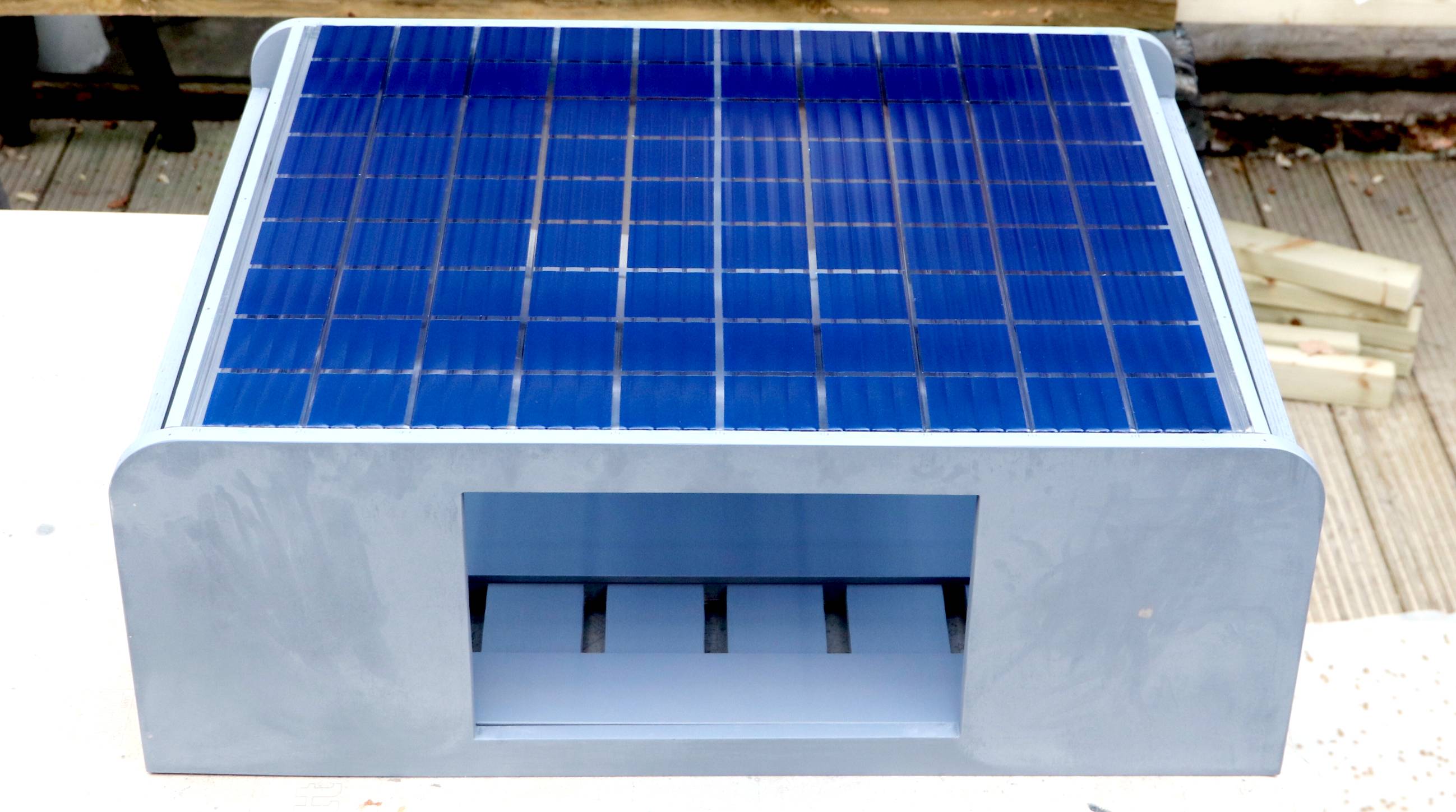
MAY
2021 - SmartNet™ is slowly developing in an R&D lab in
Sussex, England. Without funding and collaborative partners, the model
will be completed, but a full scale flatpack service stations will
remain a patent in the making. There is no point filing for protection
without
backing to make it happen. The solar panels (mocked) here only provide energy to
power the machinery in the station, not provide energy for the
vehicles being serviced.
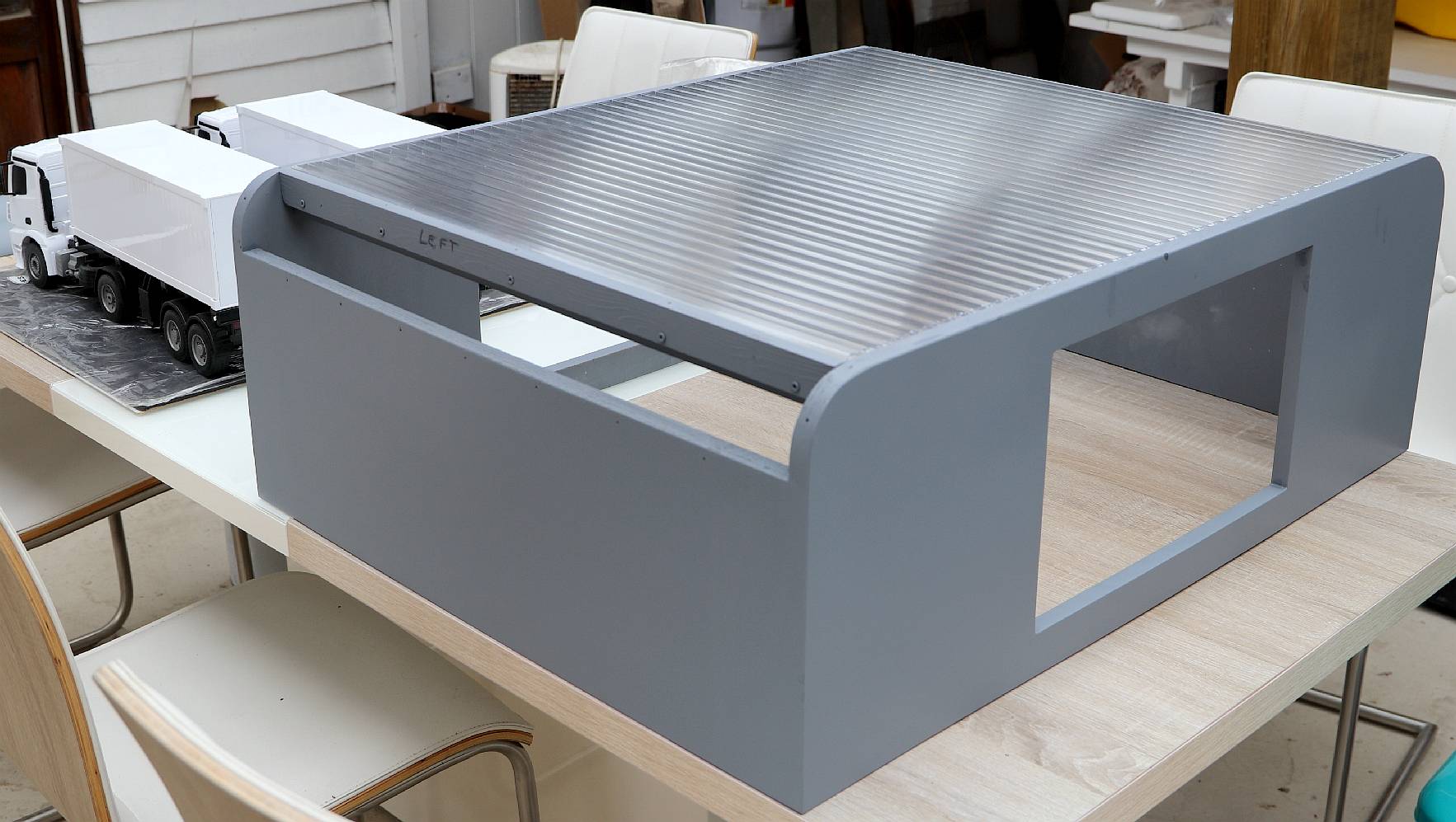
FLATPACKS
- With 600,000 service stations to replace
for transport electrification, flat packed buildings offers a way of
speeding up delivery. They could be provided on a turn-key basis to
owner-operators, or branded and franchised by energy companies. You
saw it first from the Cleaner
Ocean Foundation Ltd.
PART 2 ELECTRIC VEHICLES: CHARGING
Introductory
9.
Definitions
(1) For the purposes of this Part —
(a) “charge point” means a device intended for charging a vehicle
that is capable of being propelled by electrical power derived from a
storage battery (or for discharging electricity stored in such a
vehicle);
(b) “hydrogen refuelling point” means a device intended for
refuelling a vehicle that is capable of being propelled by electrical
power derived from hydrogen;
(c) a charge point or a hydrogen refuelling point is a “public
charging or refuelling point” if it is provided for use by members
of the general public.
(2) In this Part —
“operator”, in relation to a public charging or refuelling point,
has the meaning given by regulations;
“prescribed” means prescribed by regulations;
“vehicle” means a vehicle that is intended or adapted for use on
roads.
Requirements and prohibitions
10.
Public charging or refuelling points: access, standards and connection
(1) Regulations may impose requirements on operators of public
charging or refuelling points in connection with —
(a) the method of payment or other way by which access to the use of
public charging or refuelling points may be obtained;
(b) performance, maintenance and availability of public charging or
refuelling points;
(c) the components of public charging or refuelling points that
provide the means by which vehicles connect to such points
(“connecting components”).
(2) Regulations under subsection (1)(a) may require operators —
(a) to provide a prescribed method of payment or verification for
obtaining access to the use of public charging or refuelling points;
(b) to co-operate with each other for the purposes of a requirement
imposed by the regulations (for example, by sharing facilities or
information);
(c) to take prescribed steps for the purposes of such a requirement
(for example, to provide information to a prescribed person).
(3) Regulations under subsection (1)(b) may, for example, require the
operator of a public charging or refuelling point to ensure that the
point complies with prescribed requirements (which may include
technical specifications).
(4) Regulations under subsection (1)(c) may, for example, require the
operator of a public charging or refuelling point to ensure that its
connecting components comply with prescribed requirements (which may
include technical specifications for connecting components or any
related equipment).
11.
Large fuel retailers etc: provision of public charging or refuelling
points
(1) Regulations may impose requirements on —
(a) large fuel retailers falling within a prescribed description, or
(b) service area operators falling within a prescribed description,
in connection with the provision on their premises of public charging
or refuelling points.
(2) Regulations under subsection (1) may, for example —
(a) require large fuel retailers or service area operators to provide
public charging or refuelling points;
(b) require public charging or refuelling points to be available for
use at prescribed times;
(c) require services or facilities prescribed by the regulations to be
provided in connection with public charging or refuelling points.
(3) In this section “large fuel retailer” and “service area
operator” have the meaning given by regulations.
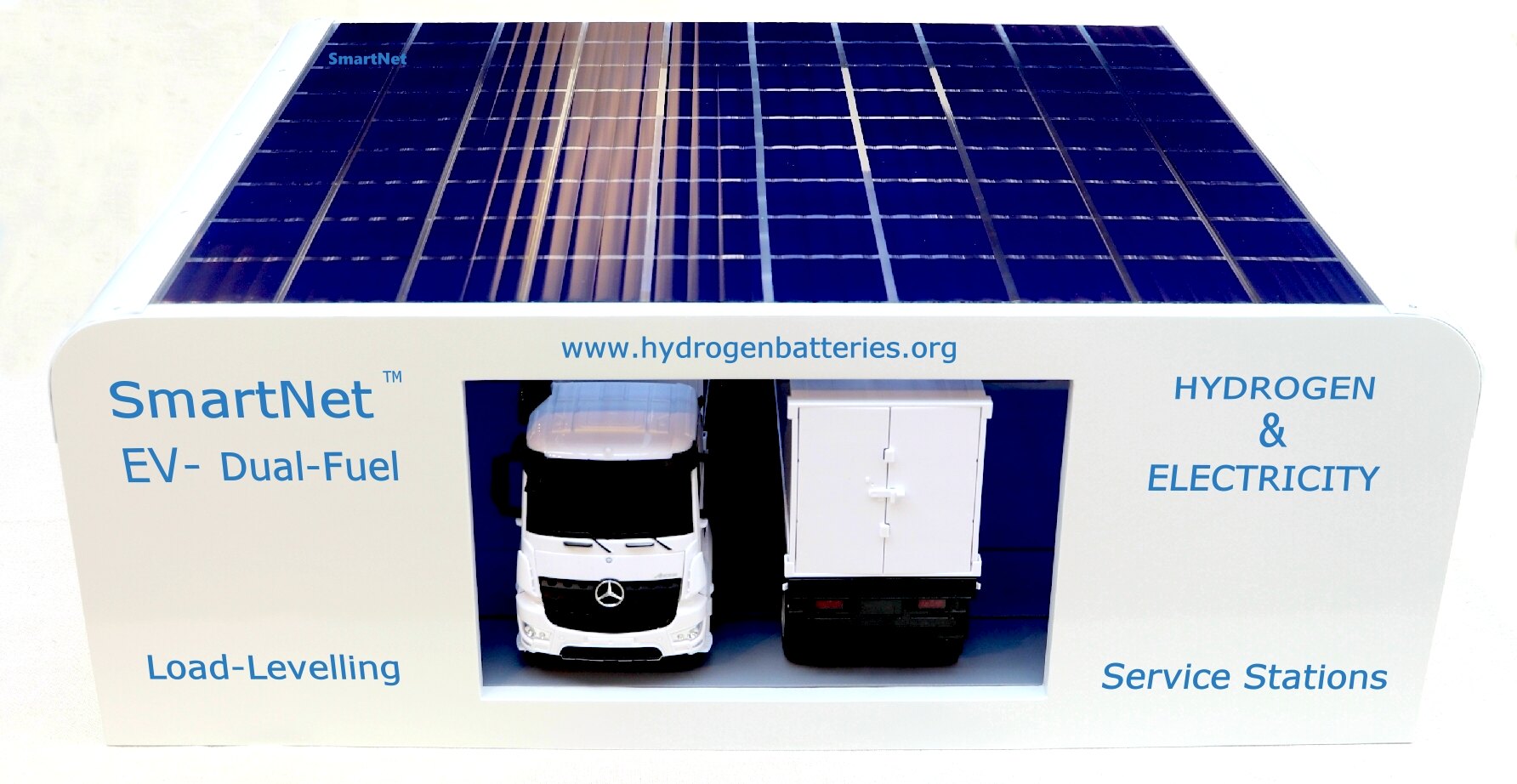
VENDING
MACHINES - Pop on a hydrogen
battery (kit) and any vehicle can use these smart automatic
service stations. Most suitable for HGVs and robotic vehicles such as robotaxis.
But, also able to load level and provide rapid plug-in charging and
hydrogen in gas form, to regular EVs. With
only 14 hydrogen filling station in the UK, and 40 or so in
California, we have a way to go.
12.
Duty to consider making regulations under section 11 (1) (a) on
request by elected mayor
(1) The Secretary
of State must consider making section 11(1)(a)
regulations in relation to the whole or part of a relevant area if —
(a) the mayor for the relevant area makes a request for such
regulations to be made,
(b) conditions 1 to 3 are met, and
(c) the Secretary of State considers that the mayor has complied with
any prescribed requirements before making the request.
(2) “Section 11(1)(a) regulations” means regulations under section
11(1) that impose requirements on large fuel retailers within section
11(1)(a).
(3) Condition 1 is that the Secretary of State is satisfied that,
before making the request, the mayor —
(a) published proposals for section 11(1)(a) regulations to be made in
relation to the whole or part of the relevant area, an
(b) consulted —
(i) each local authority any part of whose area falls within the
relevant area or, if the request relates to part of the relevant area,
within that part,
(ii) persons who would be likely to be subject to requirements under
the regulations (if made), and
(iii) such other persons as the mayor considers appropriate, in
relation to the published proposals.
(4) Condition 2 is that the mayor has given the Secretary of State a
summary of the responses to the consultation referred to in subsection
(3)(b).
(5) Condition 3 is that regulations have been made under section 11(3)
in relation to the meaning of “large fuel retailer”.
(6) If the Secretary of State decides not to make section 11(1)(a)
regulations in response to the mayor’s request, the Secretary of
State must notify the mayor of the decision and the reasons for it.
(7) For the purposes of this section —
(a) “relevant area” means the area of a combined authority or
Greater London;
(b) the mayor for a relevant area is —
(i) in the case of the area of a combined authority, the mayor for the
area elected in accordance with section 107A(2) of the 2009 Act;
(ii) in the case of Greater London, the Mayor of London.
(8) In this section —
“the 2009 Act” means the Local Democracy, Economic Development and
Construction Act 2009;
“combined authority” means a combined authority established under
section 103(1) of the 2009 Act;
“large fuel retailer” has the same meaning as in section 11;
“local authority” means —
(a) a district
council,
(b) a county
council, or
(c) a London borough council.
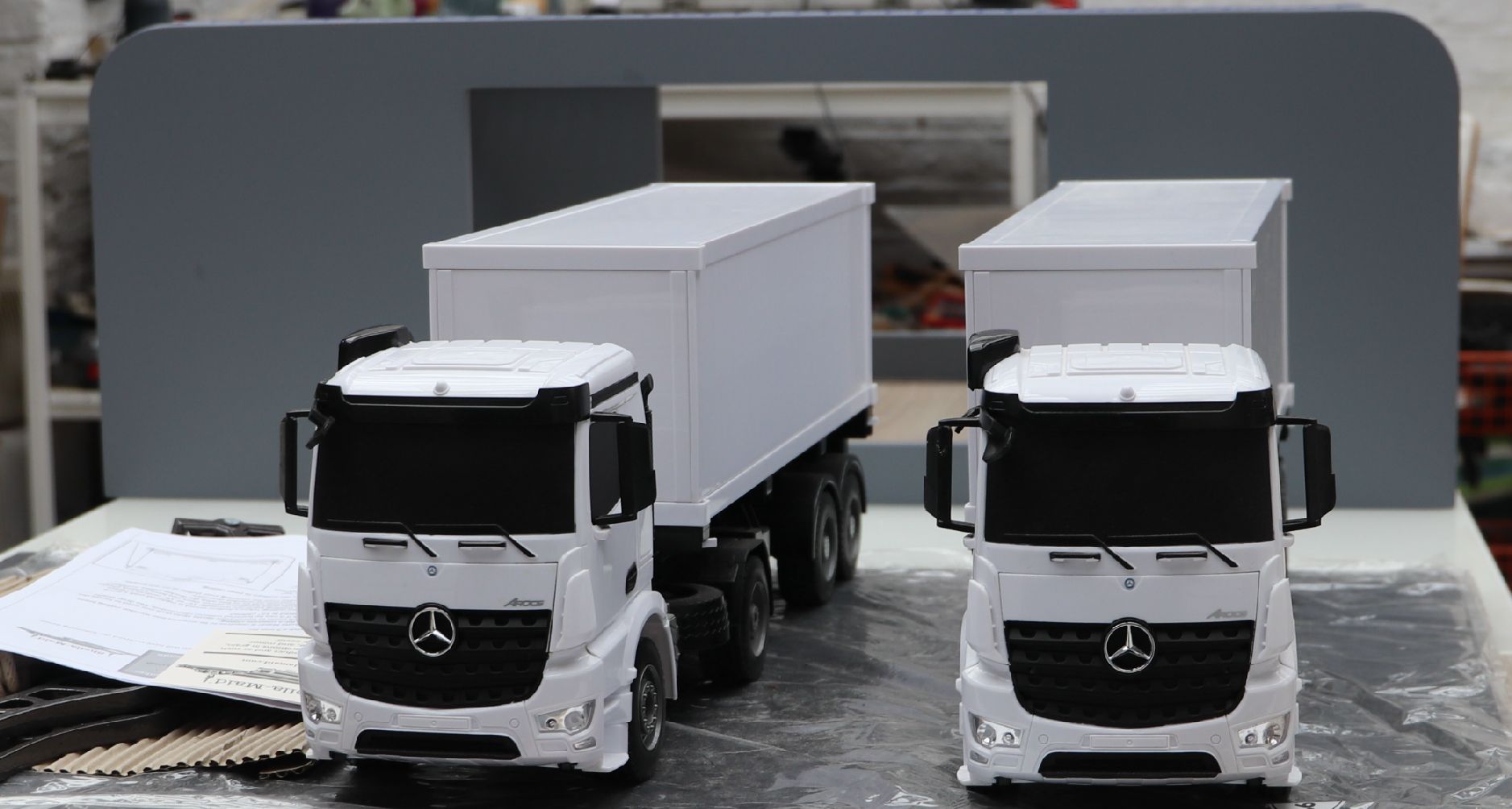
ROBOTRUCK
AUTOMATED SERVICING - SmartNet™ station
look to the future of unmanned EVs, looking to refuel and recharge
without a driver to plug in or pay for energy. Aiming to service a
robotic truck or taxis
every 90 seconds. You saw it first from the Cleaner
Ocean Foundation Ltd. Imitations are sure to follow as the planet
heats up!
13.
Information for users of public charging or refuelling points
(1) Regulations may require operators of public charging or refuelling
points to make available prescribed information relating to such
points.
(2) The information that may be prescribed under subsection (1) in
relation to a public charging or refuelling point is such information
as the Secretary of State considers likely to be useful to users or
potential users of the point, for example information about —
(a) the location of the point and its operating hours,
(b) available charging or refuelling options,
(c) the cost of obtaining access to the use of the point,
(d) the method of payment or other way by which access to the use of
the point may be obtained,
(e) means of connection to the point,
(f) whether the point is in working order, and
(g) whether the point is in use.
(3) The regulations may make provision —
(a) about when, how, to whom and in what form the information is to be
made available;
(b) for the information to be made available without restrictions on
its use and disclosure.
(4) The regulations may be made so as to have effect for a prescribed
period.
14.
Transmission of data relating to charge points
(1) Regulations may make provision for the purpose of ensuring the
ongoing transmission of charge point data to a prescribed person or to
persons of a prescribed description.
(2) “Charge point data” means prescribed information relating to a
charge point (which may include information about energy consumption
and geographical information).
(3) Regulations under subsection (1) may impose requirements —
(a) on operators of charge points that are provided for use by members
of the general public, and
(b) in relation to charge points that are not provided as mentioned in
paragraph (a), on prescribed persons or persons of a prescribed
description (subject to subsection (4)).
(4) Regulations under subsection (1) may not impose requirements on
owners or occupiers of domestic premises.
(5) Regulations under subsection (1) may make provision about when,
how and in what form charge point data is to be transmitted.
15.
Smart charge points
(1) Regulations may provide that a person must not sell or install a
charge point unless it complies with prescribed requirements.
(2) The requirements that may be imposed under subsection (1) include
requirements relating to the technical specifications for a charge
point, including for example the ability of a charge point —
(a) to receive and process information provided by a prescribed
person,
(b) to react to information of a kind mentioned in paragraph (a) (for
example, by adjusting the rate of charging or discharging),
(c) to transmit information (including geographical information) to a
prescribed person,
(d) to monitor and record energy consumption,
(e) to comply with requirements relating to security,
(f) to achieve energy efficiency, and
(g) to be accessed remotely.
(3) Regulations under subsection (1) may also prescribe requirements
to be met in relation to the sale or installation of a charge point.
(4) In this section —
(a) “sell” includes let on hire, lend or give;
(b) references to a prescribed person include references to —
(i) a person of a prescribed description, and
(ii) a device operated by one or more prescribed persons.
General and supplementary
16.
Enforcement
(1) Regulations under this Part may make provision for enforcement in
connection with a contravention of a requirement or prohibition
imposed by the regulations.
(2) Regulations made by virtue of subsection (1) may, for example —
(a) contain provision for determining whether there has been a failure
to comply with a requirement or prohibition;
(b) provide for the imposition of a financial penalty (and for the
payment of such a penalty into the Consolidated Fund);
(c) set out the procedure to be followed in imposing a penalty;
(d) make provision about the amount of a penalty;
(e) make provision about the enforcement of a penalty;
(f) provide for a right of appeal against the imposition of a penalty;
(g) provide for a determination for the purposes of the regulations to
be made by the Secretary of State or a prescribed person.
(3) The provision referred to in subsection (2)(a) includes —
(a) provision authorising a prescribed person to enter any land in
accordance with the regulations;
(b) provision for the inspection or testing of any thing by a
prescribed person, which may for example include provision about —
(i) the production of documents or other things,
(ii) the provision of information,
(iii) the making of photographs or copies, and
(iv) the removal of any thing for the purpose of inspection or testing
and its retention for that purpose for a reasonable period.
17.
Exceptions
(1) Regulations under this Part may create exceptions from any
requirement or prohibition imposed by the regulations.
(2) An exception may be created in relation to a prescribed
description of persons or devices.
(3) The Secretary of State may determine that a requirement or
prohibition imposed by regulations under this Part does not apply in
relation to a person or device specified in the determination.
(4) The Secretary of State must publish a determination made under
subsection (3).
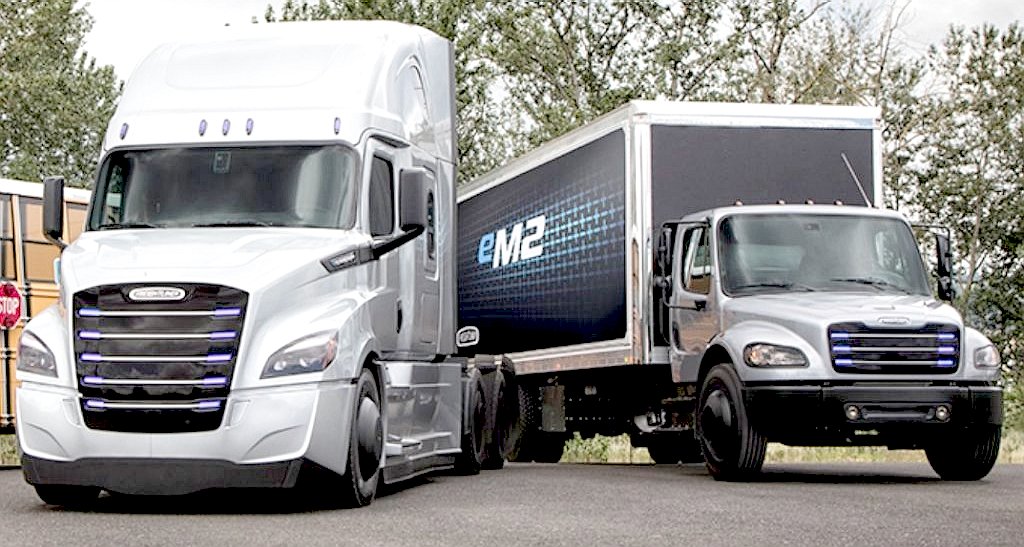
Daimler Trucks North America have announced their intention to launch two all electric heavy trucks into the North American market, which according to Daimler,
confirms they are comfortable out front, in the world of innovative new trucking technology,
further exemplified by two new electric Freightliner trucks: the eCascadia and eM2 106.
As part of the widest range of commercial electric vehicles offered by any North American OEM, the all-new, all-electric Freightliner eCascadia and eM2 106 trucks are designed for specific applications and created with input from customers who rely on both diesel models.
The class-8 Freightliner eCascadia is a heavy-duty, on-highway truck with an up to 250-mile range, designed for local and regional distribution and drayage.
The eM2 106 is a medium-duty workhorse, with an up to 230-mile range, built for local distribution, pickup and delivery, or food and beverage delivery.
According to DTNA CEO Roger Nielsen:
“These innovative trucks reflect DTNA’s commitment to bring practical, game-changing technology to market. The
eCascadia, North America’s bestselling class-8 platform, and eM2 106 are built on validated, series-production platforms in extensive use by commercial vehicle customers every day. This gives us confidence that we will offer our customers the emission-free solutions they want for their fleets to meet real business needs. Our highest aim at Daimler Trucks is ensuring that we bring to market vehicles that are safe, reliable, and efficient.”

In addition to the exciting new Freightliner eCascadia and eM2 trucks, Daimler is leading the pack from North America with the Thomas Built Buses electric school bus. The C2
Saf-T-Liner or “Jouley” school bus from Thomas Built Buses was introduced last year in anticipation of limited production beginning in 2019.
One day these buses might be robotic.
https://thomasbuiltbuses.com/school-buses/saf-t-liner-c2-jouley/
18.
Regulations
(1) Regulations under this Part —
(a) may make different provision for different purposes or different
areas;
(b) may make supplemental, incidental, transitional or consequential
provision.
(2) A power to make regulations under this Part is exercisable by the
Secretary of State by statutory instrument.
(3) Before making regulations under this Part, the Secretary of State
must consult such persons as the Secretary of State considers
appropriate.
(4) Subject to subsection (7), where —
(a) a statutory instrument contains regulations under this Part, and
(b) any of those regulations are the first regulations under a
provision of this Part,
the instrument may not be made unless a draft of it has been laid
before Parliament and approved by a resolution of each House.
(5) Where —
(a) a statutory instrument contains regulations under section 11
(large fuel retailers etc), and
(b) the regulations amend the definition of “large fuel retailer”
or “service area operator”,
the instrument containing the regulations may not be made unless a
draft of it has been laid before Parliament and approved by a
resolution of each House.
(6) A statutory instrument containing regulations under this Part none
of which are —
(a) the first regulations under a provision of this Part, or
(b) regulations to which subsection (5) applies,
is subject to annulment in pursuance of a resolution of either House
of Parliament.
(7) Where regulations contain only provision made by virtue of —
(a) section 10(3) or (4) (prescribed requirements for public charging
or refuelling points or for connecting components), or
(b) section 15 (prescribed requirements for charge points),
the instrument containing the regulations is subject to annulment in
pursuance of a resolution of either House of Parliament.
(8) If a draft of a statutory instrument containing relevant section
11(1)(a) regulations would, apart from this subsection, be treated for
the purposes of the standing orders of either House of Parliament as a
hybrid instrument, it is to proceed in that House as if it were not
such an instrument.
(9) In subsection (8) “relevant section 11(1)(a) regulations”
means regulations under section 11(1)(a) that are made pursuant to
section 12 (duty to consider making regulations under section 11(1)(a)
on request by elected mayor).
19.
Report by Secretary of State on operation of this Part
(1) The Secretary of State must, in respect of each reporting period,
prepare a report assessing —
(a) the impact and effectiveness of regulations made under this Part;
(b) the need for regulations to be made under this Part during
subsequent reporting periods.
(2) Each report must be laid before Parliament after the end of the
reporting period to which it relates.
(3) The first reporting period is the period of two years beginning
with the day on which this Act is passed.
(4) Each subsequent period of 12 months after the first reporting
period is a reporting period.
PART 3 Miscellaneous and general
20.
Minor and consequential amendments
21. Commencement
22. Extent
23. Short title
20 Minor and consequential amendments
(1) The Schedule (minor and consequential amendments) has effect.
(2) The Secretary of State may by regulations make provision that is
consequential on any provision made by this Act.
(3) The power to make regulations under this section is exercisable by
statutory instrument.
(4) Regulations under this section may amend any enactment passed or
made before this Act or in the same Session.
(5) A statutory instrument containing regulations under this section
any of which amend primary legislation may not be made unless a draft
of the instrument has been laid before Parliament and approved by a
resolution of each House.
(6) A statutory instrument containing regulations under this section
none of which amends primary legislation is subject to annulment in
pursuance of a resolution of either House of Parliament.
(7) In this section —
“amend” includes repeal or revoke;
“primary legislation” means —
(a) an Act of Parliament;
(b) an Act of the Scottish Parliament;
(c) an Act or Measure of the National Assembly for Wales;
(d) Northern Ireland legislation.
21
Commencement
(1) This Act comes into force on whatever day or days the Secretary of
State appoints by regulations.
(2) Subsection (1) does not apply to the following provisions of this
Act (which come into force on the day on which this Act is passed)—
(a) section 20(2) to (7);
(b) this section;
(c) sections 22 and 23.
(3) The power to make regulations under this section is exercisable by
statutory instrument.
(4) Regulations under this section—
(a) may appoint different days for different purposes or different
areas;
(b) may make transitional, transitory or saving provision.
22
Extent
(1) Part 1 extends to England and Wales and Scotland.
(2) Part 2 extends to England and Wales, Scotland and Northern
Ireland.
(3) An amendment made by the Schedule has the same extent as the
provision to which it relates.
23
Short title
This Act may be cited as the Automated and Electric Vehicles Act 2018.
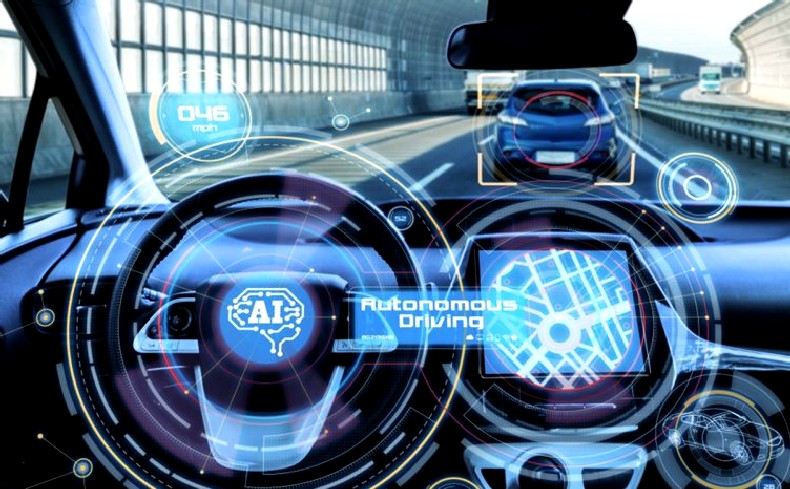
SCHEDULE
of MINOR AND CONSEQUENTIAL AMENDMENTS
Prescription and Limitation (Scotland) Act 1973 (c. 52)
1 In section 17 of the Prescription and Limitation (Scotland) Act 1973
(actions in respect of personal injuries not resulting in death),
after subsection (1) insert —
“(1A) This section does not apply to an action of damages in respect
of personal injuries to which section 18ZA applies.”
2 In section 18 of that Act (actions where death has resulted from
personal injuries), after subsection (1) insert —
“(1A) This section does not apply to an action of damages in respect
of personal injuries or death to which section 18ZA applies.”
3 After that section insert —
“18ZA Actions under section 2 of the Automated and Electric Vehicles
Act 2018
(1) This section applies to an action of damages under section 2 of
the 2018 Act (liability of insurers etc where accident caused by
automated vehicle).
(2) An action may not be brought after the expiry of the period of 3
years beginning with —
(a) the date of the accident mentioned in subsection (1) or (as the
case may be) subsection (2) of that section, or
(b) where subsection (3) applies, the date on which the person who
sustained the injuries first became aware of the facts mentioned in
subsection (4) (if later).
(3) This subsection applies where the damages claimed consist of or
include damages in respect of personal injuries (to the pursuer or any
other person).
(4) The facts are —
(a) that the injury in question was significant;
(b) that the injury was attributable in whole or in part to an
accident caused by an automated vehicle when driving itself; and
(c) the identity of the insurer of the vehicle (in the case of an
action under section 2(1) of the 2018 Act) or the owner of the vehicle
(in the case of an action under section 2(2) of that Act).
(5) Expressions used in subsection (4) that are defined for the
purposes of Part 1 of the 2018 Act have the same meaning in that
subsection as in that Part.
(6) In the computation of the period specified in subsection (2) above
any time during which the person who sustained the injuries was under
legal disability by reason of nonage or unsoundness of mind is to be
disregarded.
(7) If a person injured in the accident dies before the expiry of the
period mentioned in subsection (2) above, an action may not be brought
after the expiry of the period of 3 years beginning with —
(a) the date of death of the person, or
(b) where subsection (3) applies, the date on which the pursuer first
became aware of the facts mentioned in subsection (4) (if later).
(8) Where an action has not been brought before the expiry of the
period mentioned in subsection (2) above and the person subsequently
dies in consequence of injuries sustained in the accident, an action
may not be brought in respect of those injuries or that death.
(9) Subsection (10) applies if a person injured in the accident dies
and the person seeking to bring the action is a relative of the
deceased.
(10) In the computation of the period specified in subsection (7) any
time during which the relative was under legal disability by reason of
nonage or unsoundness of mind is to be disregarded.
(11) In this section —
“the 2018 Act” means the Automated and Electric Vehicles Act 2018;
“relative” has the same meaning as in the Damages (Scotland) Act
2011.
18ZB Section 18ZA: extension of limitation periods
(1) Subsection (2) applies where a person would be entitled, but for
section 18ZA, to bring an action other than one in which the damages
claimed are confined to damages for loss of or damage to property.
(2) The court may, if it seems to it equitable to do so, allow the
person to bring the action despite that section.
18ZC Actions under section 5 of the Automated and Electric Vehicles
Act 2018
(1) Subsection (2) applies where, by virtue of section 5 of the
Automated and Electric Vehicles Act 2018 (right of insurer etc to
claim against person responsible for accident), an insurer or vehicle
owner becomes entitled to bring an action against any person.
(2) The action may not be brought after the expiry of the period of 2
years beginning with the date on which the right of action accrued
(under subsection (5) of that section).”
4 In section 19CA of that Act (interruption of limitation period:
arbitration), in subsection (1), after “18(2),” insert “18ZA(2)
or (7), 18ZC(2),”.
5 In section 19F of that Act (extension of limitation periods:
cross-border mediation), in subsection (1), after “18,” insert
“18ZA, 18ZC,”.
6 In section 22 of that Act (interpretation of Part 2 and
supplementary provisions), in subsection (2) —
(a) for “or 18A” substitute “, 18A or 18ZA”;
(b) after “the said section 18A” insert “or subsection (3) or
(7)(b) of the said section 18ZA”.
7 In Schedule 1 to that Act (obligations affected by prescriptive
periods of 5 years under section 6), in paragraph 2, after
sub-paragraph (g) insert—
“(ga) to any obligation to make reparation arising from liability
under section 2 of the Automated and Electric Vehicles Act 2018
(liability of insurer etc. where accident caused by automated
vehicle);”.”.
Limitation Act 1980 (c. 58)
8 In section 9 of the Limitation Act 1980 (time limit for actions for
sums recoverable by statute), in subsection (2), after “section
10” insert “or 10A”.
9 After section 10 of that Act insert—
“10A Special time limit for actions by insurers etc in respect of
automated vehicles
(1) Where by virtue of section 5 of the Automated and Electric
Vehicles Act 2018 an insurer or vehicle owner becomes entitled to
bring an action against any person, the action shall not be brought
after the expiration of two years from the date on which the right of
action accrued (under subsection (5) of that section).
(2) An action referred to in subsection (1) shall be one to which
sections 32, 33A and 35 of this Act apply, but otherwise Parts 2 and 3
of this Act (except sections 37 and 38) shall not apply for the
purposes of this section.”
10 In the italic heading before section 11 of that Act, after
“personal injuries or death” insert “etc”.
11 After section 11A of that Act insert —
“11B Actions against insurers etc of automated vehicles
(1) None of the time limits given in the preceding provisions of this
Act shall apply to an action for damages under section 2 of the
Automated and Electric Vehicles Act 2018 (liability of insurer etc
where accident caused by automated vehicle). But this subsection does
not affect the application of section 5A of this Act.
(2) An action for damages against an insurer under subsection (1) of
section 2 of the Automated and Electric Vehicles Act 2018 (including
an action by an insured person under a contract of insurance in
respect of the insurer’s obligations under that section) shall not
be brought after the expiration of the period of three years from —
(a) the date of the accident referred to in that subsection; or
(b) where subsection (3) below applies, the date of knowledge of the
person injured (if later).
(3) This subsection applies where the damages claimed consist of or
include damages in respect of personal injuries (to the claimant or
any other person).
(4) An action for damages against the owner of a vehicle under
subsection (2) of that section shall not be brought after the
expiration of the period of three years from —
(a) the date of the accident referred to in that subsection; or
(b) where subsection (3) above applies, the date of knowledge of the
person injured (if later).
(5) If a person injured in the accident dies before the expiration of
the period mentioned in subsection (2) or (4) above, the period
applicable as respects the cause of action surviving for the benefit
of the person’s estate by virtue of section 1 of the Law Reform
(Miscellaneous Provisions) Act 1934 shall be three years from —
(a) the date of death; or
(b) where subsection (3) above applies, the date of the personal
representative’s knowledge (if later).
(6) If there is more than one personal representative, and their dates
of knowledge are different, subsection (5)(b) above shall be read as
referring to the earliest of those dates.
(7) In this section “personal representative” has the same meaning
as in section 11 of this Act.”
12 In section 12 of that Act (special time limit for actions under
Fatal Accidents legislation), in subsection (1), for “or 11A”
substitute “, 11A or 11B”.
13 (1) Section 14 of that Act (definition of date of knowledge for
purposes of sections 11 and 12) is amended as follows.
(2) In the heading, for “sections 11 and 12” substitute
“sections 11 to 12”.
(3) In subsection (1), for “subsection (1A)” substitute
“subsections (1A) and (1B)”.
(4) After subsection (1A) insert —
“(1B) In section 11B of this Act and in section 12 of this Act so
far as that section applies to an action by virtue of section 6(1)(a)
of the Automated and Electric Vehicles Act 2018 (“the 2018 Act”)
(death caused by automated vehicle) references to a person’s date of
knowledge are references to the date on which he first had knowledge
of the following facts —
(a) that the injury in question was significant; and
(b) that the injury was attributable in whole or in part to an
accident caused by an automated vehicle when driving itself; and
(c) the identity of the insurer of the vehicle (in the case of an
action under section 2(1) of the 2018 Act) or the owner of the vehicle
(in the case of an action under section 2(2) of that Act).
Expressions used in this subsection that are defined for the purposes
of Part 1 of the 2018 Act have the same meaning in this subsection as
in that Part.”
14 In section 28 of that Act (extension of limitation period in case
of disability), in subsection (6), after “section 11” insert “,
11B”.
15 (1) Section 32 of that Act (postponement of limitation period in
case of concealment etc) is amended as follows.
(2) In subsection (1), for “and (4A)” substitute “, (4A) and
(4B)”.
(3) After subsection (4A) insert —
“(4B) Subsection (1) above shall not apply in relation to the time
limit prescribed by section 11B(2) or (4) of this Act or in relation
to that time limit as applied by virtue of section 12(1) of this
Act.”
16 (1) Section 33 of that Act (discretionary exclusion of time limit)
is amended as follows.
(2) In subsection (1), in paragraph (a), for “or 11A” substitute
“, 11A, 11B”.
(3)
After subsection (1A) insert—
“(1B)
Where the damages claimed are confined to damages for loss of or
damage to any property, the court shall not under this section
disapply any provision in its application to an action under section 2
of the Automated and Electric Vehicles Act 2018.”
(4)
In subsections (2) and (4), for “or subsection (4) of section 11A”
substitute “, 11A(4) or 11B(2) or (4)”.
(5)
In subsection (3)(b), after “section 11A” insert “, by section
11B”.
(6)
In subsection (8), for “or 11A” substitute “, 11A or 11B”.
Road
Traffic Act 1988 (c. 52)
17
In section 143 of the Road Traffic Act 1988 (users of motor vehicles
to be insured or secured against third-party risks), after subsection
(1) insert —
“(1A)
In the application of this Part to automated vehicles —
(a) subsection (1) above has effect with the omission of the words
“or such a security in respect of third party risks” in paragraphs
(a) and (b);
(b) this Part has effect with the omission of sections 146 and 147(2);
(c) any other references to a security or certificate of security in
this Act are to be ignored.””
18 In section 144 of that Act (exceptions from requirement of
third-party insurance etc), in subsection (1), after “does not apply
to a vehicle” insert “, other than an automated vehicle,”.
19 (1) Section 145 of that Act (requirements in respect of policies of
insurance) is amended as follows.
(2) After subsection (3) insert —
“(3A)
In the case of an automated vehicle, the policy must also provide for
the insurer’s obligations to an insured person under section 2(1) of
the Automated and Electric Vehicles Act 2018 (liability of insurers etc
where accident caused by automated vehicle) to be obligations under
the policy. In this subsection “insured person” means a person who
is covered under the policy for using the vehicle on a road or public
place in Great Britain.”
(3) At the end of subsection (4) insert — “Paragraph (a) does not
apply where the vehicle in question is an automated vehicle.”
20 In section 161 of that Act (interpretation), in subsection (1), at
the appropriate place insert —
““automated vehicle” means a vehicle listed by the Secretary of
State under section 1 of the Automated
and Electric Vehicles Act 2018,”.
21 In section 162 of that Act (index to Part 6), at the appropriate
place in the table insert —
13 June 2018
- Volume 791 - Third Reading
It's
not easy getting a Bill passed and brought into law. This Bill took
three readings, the third of which went as follows:
3.48 pm
Clause 12: Duty to consider making regulations under section 11 on request by elected mayor
Amendment 1
- Moved by Baroness Sugg
1: Clause 12, page 7, line 22, leave out from “making” to “relevant” in line 23 and insert “section 11(1)(a) regulations in relation to the whole or part of a”
The Parliamentary Under-Secretary of State, Department for Transport (Baroness Sugg)
(Con)
My Lords, this group of amendments follows the debate on Report considering the role of metro mayors in enabling the installation of charging infrastructure. In line with commitments I made on Report, I have tabled government amendments to provide clarity around this clause. I have removed reference to the “key route network” so that metro mayors can take a strategic view of large fuel retailers across their areas. As I mentioned on Report, this is limited to “large fuel retailers” and not “service area operators”, as these areas, which are situated primarily on motorways, are best dealt with on a national level.
I have made it clear that regulations can be proposed only once “large fuel retailers” has been defined. In any instance where the Secretary of State of State chooses not to introduce regulations, he will be required to inform the applicant mayor of the reasoning and there will be a requirement to ensure that relevant local authorities are consulted. I beg to move.
Baroness Randerson (LD)
I thank the Minister for that explanation. For the information of those listening, the noble Baroness, Lady Worthington, and I attempted to lay an amendment to clarify the issue of service areas, or car parks as they might be called. However, according to the rules of the House that was not possible at Third Reading, so there is no amendment from us. But there is still a question in my mind: how do the Government envisage the strategy and policy, going forward? As I mentioned the last time we discussed this, if you go to a service area on a motorway you get your electric charging near the café—very often hundreds of feet from the fuel station—but that does not appear to be what is in the Government’s mind in relation to other service areas. I would like to know what the Government’s strategy is on this. I am sorry to be raising such a detail at Third Reading but we really only talked about this on Report. I still do not have a real understanding of why the Government are not considering having regulations in relation to the car parks associated with service areas, rather than just the fuel stations.
Baroness Worthington (CB)
My Lords, I too thank the Minister for her introduction of these amendments. They are very helpful; they clarify the position and make the Bill much more useful. In Committee we debated the fact that this is a very narrow power being taken in relation to the infrastructure necessary to facilitate a greater uptake of
electric and zero-emission
vehicles. It is important that we look carefully at what more can be done to encourage everybody, at all levels of
government - whether national, metro mayor or indeed at borough level
- to take stock and introduce an effective network of chargers, which can help people to be confident that they will be able to use electric vehicles in a way that matches their current vehicle use.
I echo the comments of the noble Baroness, Lady Randerson, in asking: can we hear a little more from the Government, specifically about car parks but about destination charging in general? I feel that it is a little too laissez-faire to think that this will all happen through market forces. There are going to be times when we will need to take a strategic look at this in a specific geographical region. We need to have sufficient powers to enable us to make this infrastructure happen; we will otherwise not see the uptake that we need to hit our air-quality and
climate-change targets.
Lord Berkeley (Lab)
My Lords, at the risk of causing a bit of trouble at this stage of the Bill, I cannot see why it matters particularly where the charging points are in a motorway service station. If you are going to park your car and go off to have a drink, you might as well plug it in while having it. If you do not want to do that but have a high-powered, high-speed charger you can probably do that as if you are filling up with petrol. The general principle in the Bill is all right but I suspect that the commercial pressures on the operators will persuade them to put the charging points where they are most convenient.
Lord Tunnicliffe
(Lab)
I thank the Minister for bringing forward these amendments, which seem to have produced a consensus on all the issues which were brought up on Report. I must agree with other speakers that the Bill is narrow and, to be fair, it is generally our role to scrutinise Bills. While we have done that, there has to be much wider consideration given by government to this whole area. That consideration has to work with other parts of government and local government, so that we do not trip into the area of sovereignty conflict. Fortunately, that seems to have been effectively solved by the amendments and the consultation. It is an important area to get straight if we are to achieve the spread of
charging points that will be necessary, particularly to achieve our air-quality targets.
Baroness Sugg
My Lords, I thank noble Lords for their contributions on this last group in the Bill. On the location of charging points within service areas, I take the point made by the noble Baroness, Lady Randerson, and the location of the charge points will be consulted on for the regulations.
On car parks and destination charging in general, I entirely agree that destinations such as car parks should install charging infrastructure to support the overall transition to electric vehicles. While in relation to the provision of public charge points the Bill focused on enabling long-term strategic journeys, following the debate on Report my noble friends and I are well aware of noble Lords’ strength of feeling about the provision of charge points in private car parks, and we have followed this up with the department. I thank the noble Baroness, Lady Worthington, for her persistence on this matter, and I am today able to commit to taking forward more action in this area. We will engage further with the private car parking industry to encourage best practice and will consider whether voluntary commitments can be made by the main private car park operators. We will also work with the Institution of Civil Engineers with a view to ensuring that industry guidance on the design and maintenance of car parks includes information and advice on charging provision. We will consider addressing requirements for charging infrastructure for car parks through the Private Member’s Bill on a parking code of practice, which has cross-party support.
I take this opportunity to update noble Lords on an issue which has come up at various stages of the Bill: the provision of electric charge points in our car park. I spoke to the parliamentary estate office this morning, and I am pleased to say that despite there being many other pressures on its time, we are making good progress on this. The feasibility study has produced some positive results and we are expecting the installation of some charge points in Royal Court soon.
This Bill provides a stepping stone in the development and deployment of automated vehicles on UK roads, and for zero-emissions vehicles, both electric battery and
hydrogen
refuelling, it will address access, standards and connection for public charging or refuelling points. It will address some of the issues of range anxiety, ensure adequate information for users and ensure that future charge points are smart. I acknowledge noble Lords’ feelings on the narrowness of the Bill, and I entirely agree that the Government must look at the bigger picture. The Bill is just one part of the work the Government are doing to ensure that we have a successful transition to zero-emissions vehicles. The upcoming strategy on electric vehicles will set out in more detail a suite of other measures which will enable us to reach a zero-emissions future.
I also take this opportunity to thank the Bill team, who have worked on this Bill for many months, and my noble friends Lord Lucas and Lord Borwick, the noble Lord, Lord Tunnicliffe, the noble and gallant Lord, Lord Craig, the noble Baronesses, Lady Randerson and Lady Worthington, and all other noble Lords who have helped to ensure rigorous scrutiny throughout the passage of the Bill. The constructive engagement, conversations and debates have led to significant improvements.
Lord Tunnicliffe
Before the Minister sits down—because it seems to me that I have to use that ridiculous device—I reciprocate the thanks to the noble Baroness, her co-pilot the noble Lord, Lord Young, and the team. They have set a very high standard of involvement with the Opposition and the political parties and, I believe, with individuals. It is a standard which I hope the Government will copy in all areas. We have made great improvements to the Bill, and I do not think there has been a Division on anything. We are there, and I thank the Minister for that. I also thank my massive team of one-fifth of a person, Molly Critchley, for all her support.
Lord Craig of Radley (CB)
My Lords, before the Minister sits down, we have concentrated very much on charging points, but the Bill was amended on Report to cover hydrogen refuelling points. They may not need exactly the same thing, so I would like an assurance that the way they are treated will take account purely of what they are for rather than making the broad assumption that they are charging points and therefore electric only.
Baroness Sugg
I am happy to confirm that. Many amendments changed the Bill to ensure that we were dealing with
hydrogen refuelling points as well. That was always the intent of the Bill but I agree that that was not clear enough, which is why we moved government amendments following interventions by the noble Baroness, Lady Randerson, and others on that issue. The technology around hydrogen is not yet as advanced as it is around electric battery but we will be addressing our hydrogen strategy in the upcoming Road to Zero document.
Amendment 1 agreed.
Amendments 2 to 11:
Moved by - Baroness Sugg
2: Clause 12, page 7, line 26, leave out “and 2” and insert “to 3”
3: Clause 12, page 7, line 28, at end insert —
“( ) “Section 11(1)(a) regulations” means regulations under section 11(1) that impose requirements on large fuel retailers within section 11(1)(a).”
4: Clause 12, page 7, line 31, leave out from “for” to “, and” in line 32 and insert “section 11(1)(a) regulations to be made in relation to the whole or part of the relevant area”
5: Clause 12, page 7, line 33, at end insert —
“( ) each local authority any part of whose area falls within the relevant area or, if the request relates to part of the relevant area, within that part,”
6: Clause 12, page 7, line 39, at end insert —
“( ) Condition 3 is that regulations have been made under section 11(3) in relation to the meaning of “large fuel retailer”.”
7: Clause 12, page 7, line 40, leave out subsection (4)
8: Clause 12, page 7, line 41, at end insert —
“( ) If the Secretary of State decides not to make section 11(1)(a) regulations in response to the mayor’s request, the Secretary of State must notify the mayor of the decision and the reasons for it.”
9: Clause 12, page 8, line 1, leave out paragraph (b)
10: Clause 12, page 8, line 16, at end insert —
““local authority” means—(a) a district council,(b) a county council, or(c) a London borough council.”
11: Clause 12, page 8, line 16, at end insert —
““large fuel retailer” has the same meaning as in section 11.”
Amendments 2 to 11 agreed.
Clause 18: Regulations
Amendment 12
Moved by - Baroness Sugg
12: Clause 18, page 11, line 16, at end insert —
“(8) If a draft of a statutory instrument containing relevant section 11(1) regulations would, apart from this subsection, be treated for the purposes of the standing orders of either House of Parliament as a hybrid instrument, it is to proceed in that House as if it were not such an instrument.(9) In subsection (8) “relevant section 11(1) regulations” means regulations under section 11(1) that are made pursuant to section 12 (duty to consider making regulations on request by elected mayor).”
Amendment 12 agreed.
4.00 pm - Bill passed and returned to the Commons with amendments.
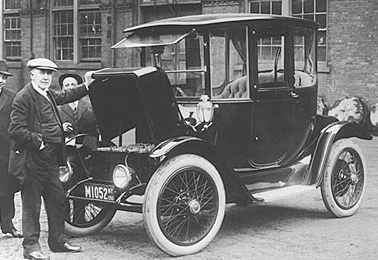
Thomas
Edison - 1912 Detroit Electric. One hundred and nine years ago they
were struggling with charging of batteries and range restrictions.
Even Professor Porsche and Ford abandoned EVs for the Infernal
Combustion Engine - and to hang with the noise and smell.
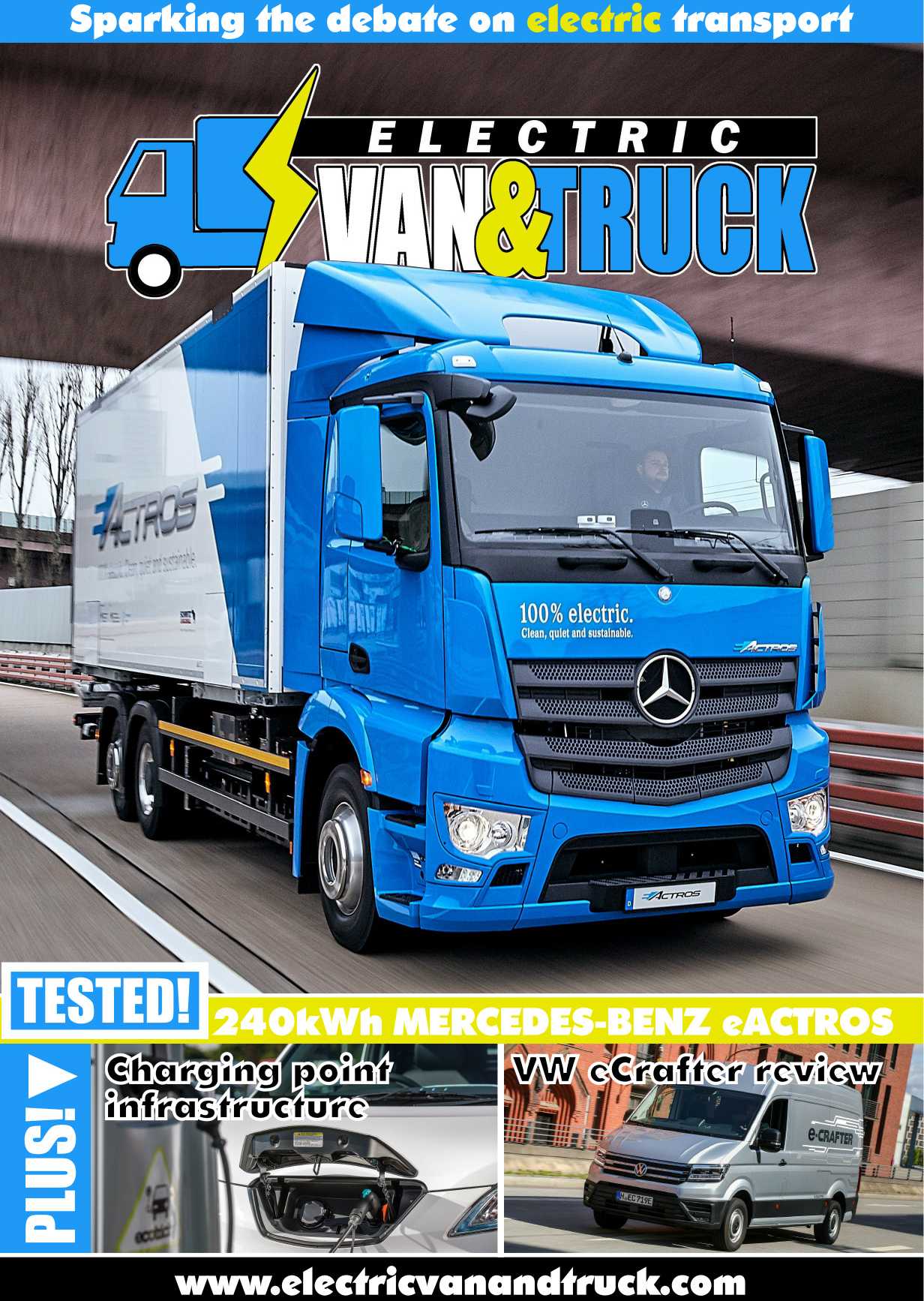
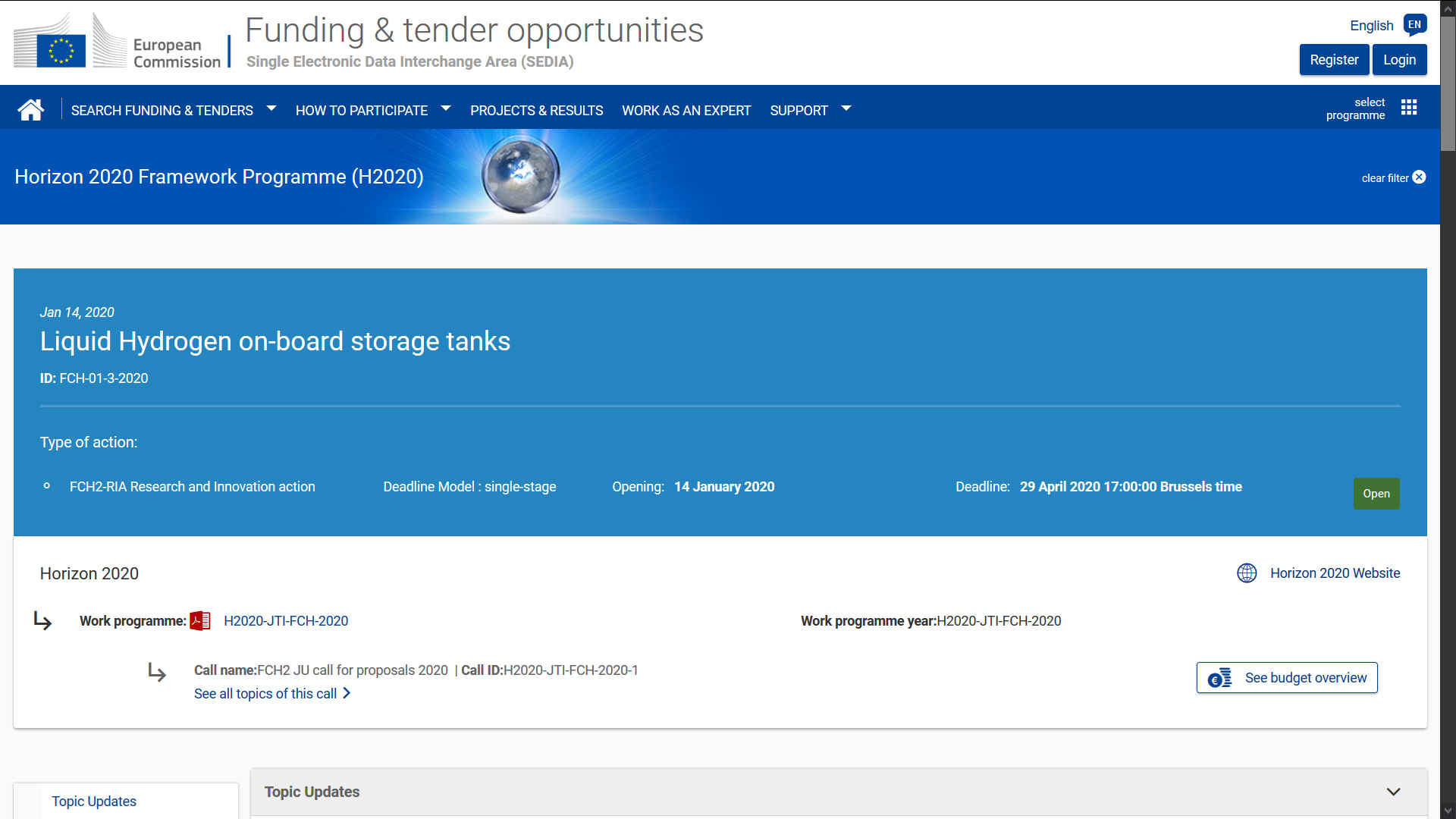
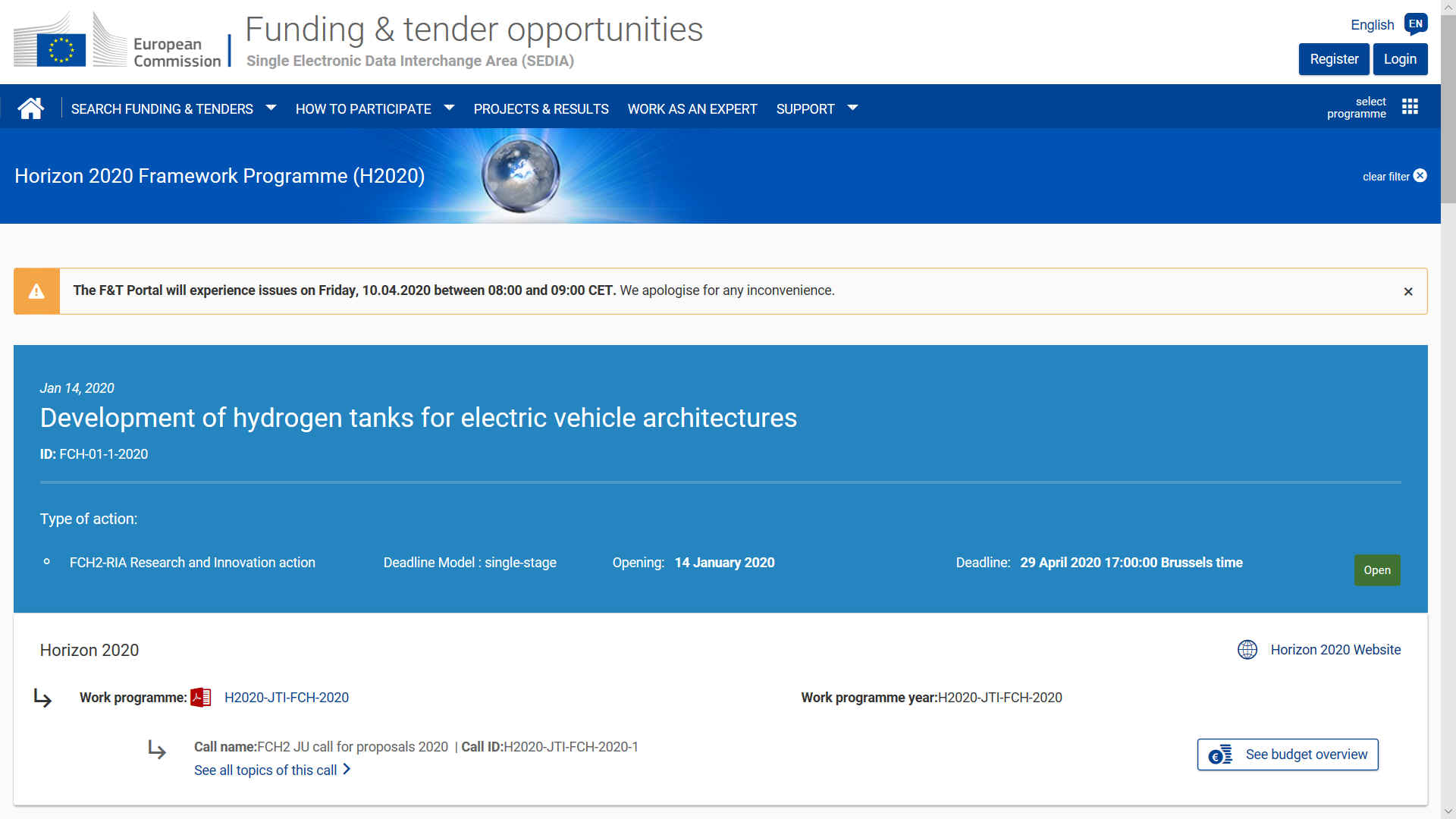

SMART-CHARGER
- Potentially the world's fastest electric car: 400mph using energy from nature.
Featuring built in energy cartridge swapping system, charged using renewable
solar energy. A project in waiting in PR terms to celebrate
the banning of petrol
and diesel
cars in Europe and the UK from 2030.
|














